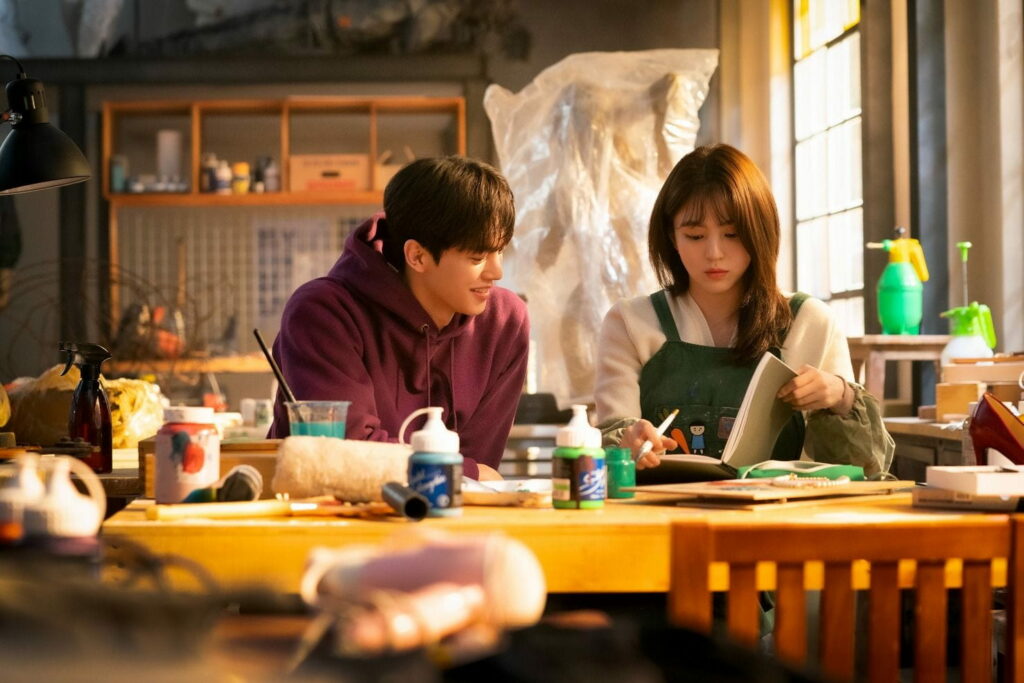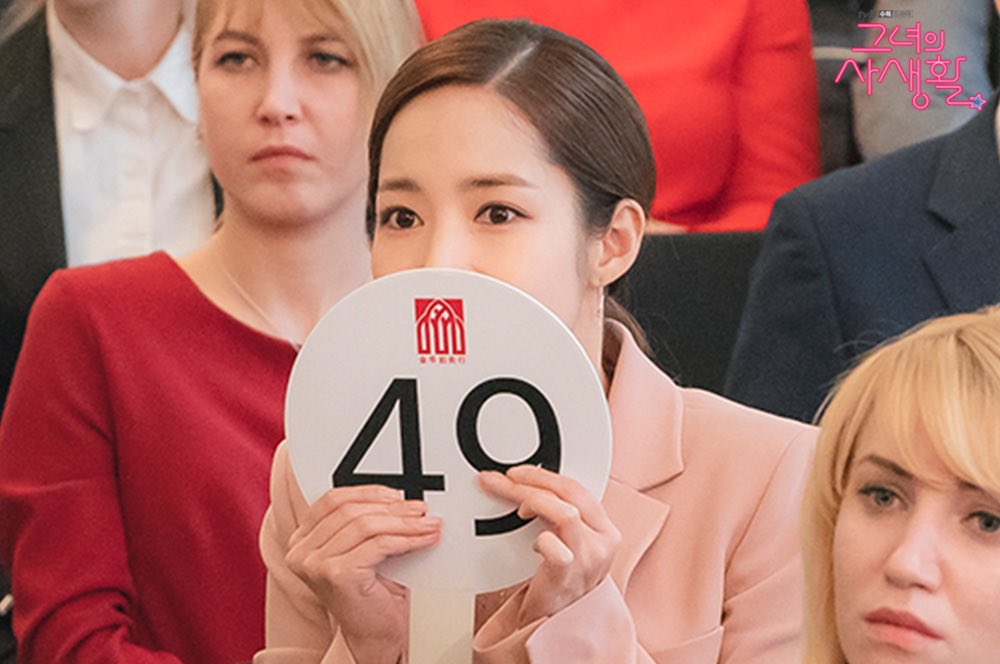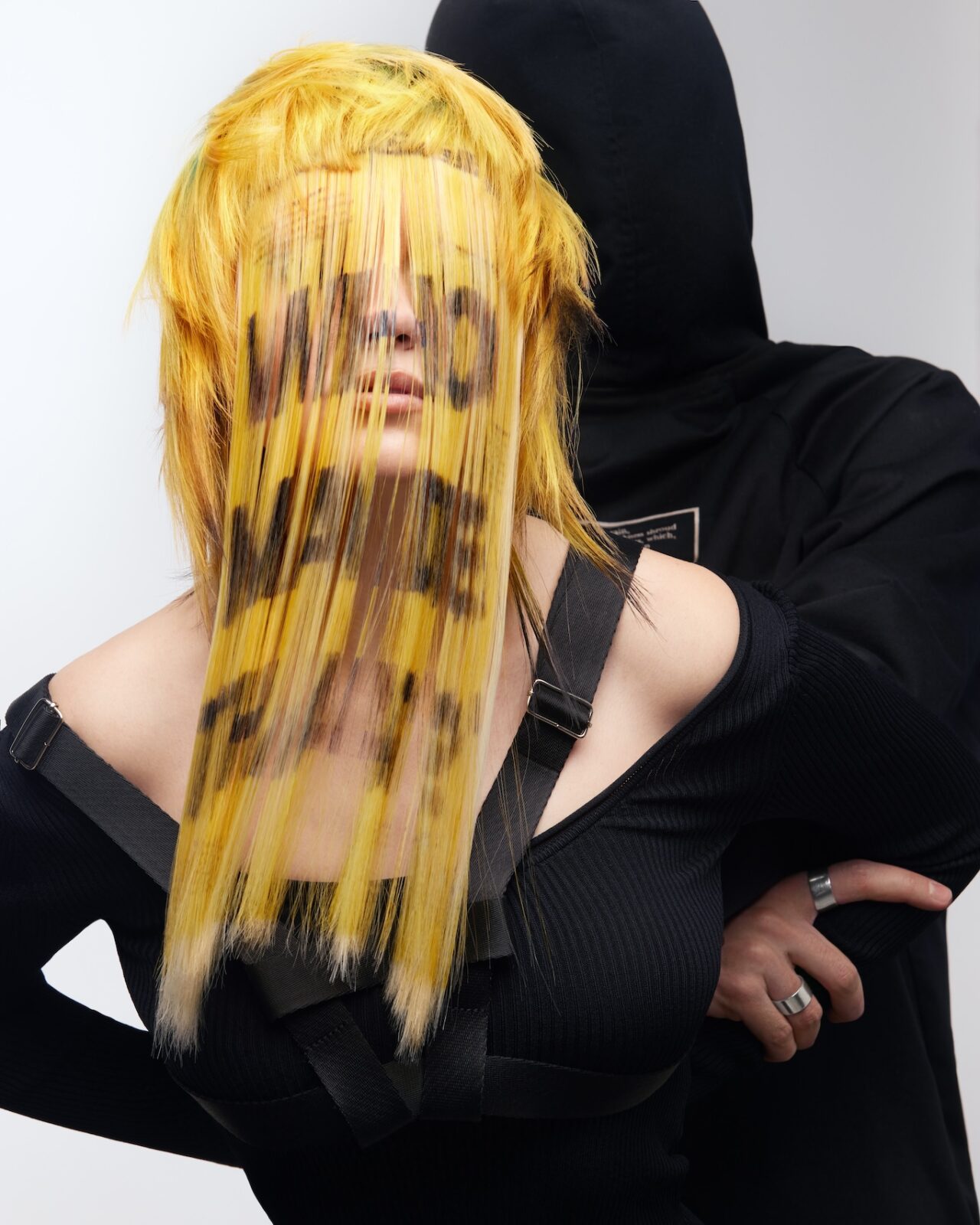A Korean cultural tsunami is sweeping the world: luxury chooses Korean actors as the faces of its advertising campaigns, the FIFA World Cup is opened by a Korean singer, and tiktokers go crazy repeating the ultra-complicated choreography of kpop idols. Ratings for Korean TV series like the famous “Squid Game” are breaking all records, and Korean movies like “Parasites” are picking up a bucketful of Oscars and Palms at a time. Of course, contemporary art, important as a trend, a discourse and a special sphere of society, could not fail to be among the topics raised in them. So how does the image of contemporary art translate to the multi-million audience of Korean TV series?

In 2021, the Netflix series “Nevertheless”, an adaptation of the popular webtoon (note: web comics) about the life of aspiring artists in and outside the Seoul Art Academy, was released and became a hit on the Netflix platform.
The protagonist Nabi, who has come to the exhibition of her teacher and lover, is not at all flattered to be his muse – she, as well as other visitors, is shocked by the explicit sculpture “A beautiful view of Nabi’s lover from behind”. Driven into an abusive relationship, she struggles to survive such “fame,” her partner’s manipulations and cheating. Problems haunt the heroine in her creative life as well: in her current psycho-emotional state, there is no way she can finish her graduation project, idly sitting in front of a draft in the evenings.
“It’s not true that art comes from loneliness: the best way to create art is to be inspired by relationships,” comes the admonition of one of the academy’s professors, and Nabi meets a charming and talented playboy, with whom she gradually finds love and inspiration in plot twists.
During 8 episodes viewers are shown a colorful kaleidoscope of student life of future painters and sculptors: costume festivals, drinking in bars after classes and everyday work, smoke breaks and deep conversations about art – I’m sure all this is close not only to Korean creators.
“Nevertheless” is interesting not only for its twisted plot lines and references to masterpieces of world painting, but also for the specifics of teaching at a Korean art university. As in many other art institutions, the emphasis in teaching at the Seoul Art Academy is placed on personal mastery and mastery of manual labor techniques (which is particularly characteristic of the Asian system of art education). Prospective artists here are taught to pursue the perfect tone of paint and the perfect form, rather than thinking through concept statements or writing a CV.

Another series, Her Private Life (2019), gives a glimpse into the inner workings of a contemporary Korean gallery.
The main character Sung Dokmi works as a curator at the private museum CHEUM, which is prototypically based on the real-life Seoul Olympic Museum of Art (SOMA).
Already in the first episode the viewer gets acquainted with the long list of Dokmi’s duties as a curator: opening and moderating the exhibition, preparing the logistics of the project and printed materials, and most importantly – solving any critical force majeure on the eve of the exhibition.
During transportation the paintings are delayed – and Dokmi and her assistants are in emergency mode until late at night repainting the walls, changing the architecture of the exhibition and hanging the paintings. At the same time she, like many in this field, remains a kind of “invisible cinderella” for the media and collectors.
The plot conflict comes to a head when Dokmi doesn’t get the promotion she deserves, and one day she discovers a curator invited from America in the coveted position. Ryan Gold is the complete opposite of the protagonist: a renowned curator from the Mono Art gallery (a reference to MoMA, New York’s Museum of Modern Art) who, with a word of his own, decides the fate of young artists.

The series very accurately captures one of the main tendencies in the post-colonial art business – to appoint foreign curators with “regalia”, albeit completely detached from the local context, to leading positions.
However, in addition to the multilevel conflict “SOMA vs MoMA”, the series reveals many nuances that are interesting not only to the general public, but also to novice curators: how not to destroy relationships when an artist is rejected, how to bargain at an auction, and even how to fight for compensation because of a returned defective painting.
It is no less interesting to observe the working “curatorial” everyday life, passing in attempts to find a balance between the far from beautiful gallery owner and the new ambitious and progressive foreign director of the gallery. As we know, curators often have to act as psychologists and even diplomats in battles between sponsors, artists and institutions.

Contemporary art as a phenomenon and a thing in itself, of course, is understudied neither in academic circles nor even in the art world itself, and a meta-language to describe it is just being formed – but the more important thing is that contemporary art is increasingly being chosen as a setting and even a theme in such extremely popular media formats, becoming closer and clearer to millions of people as a result.
text: Victoria Chevik






